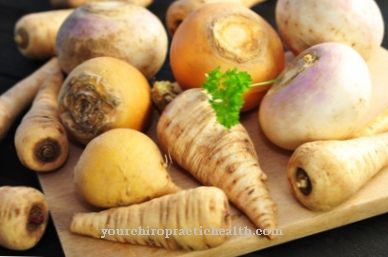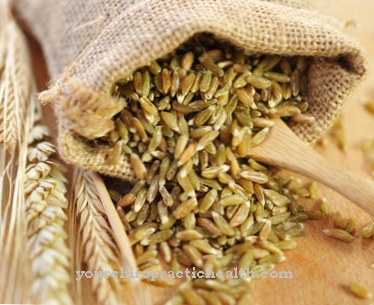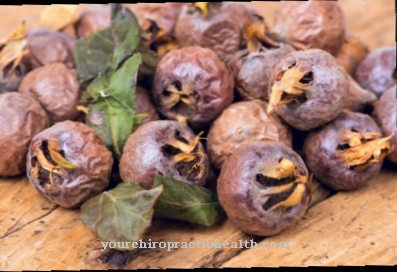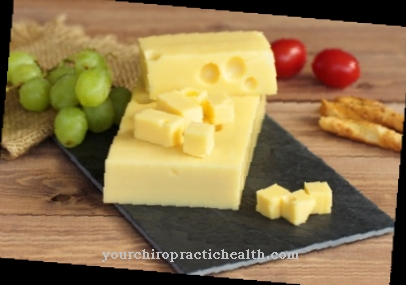Small but with a big impact Quinoa therefore. The granules are one of the most important staple foods in South America for a reason. They convince not only with their taste, but also with the numerous useful nutrients that make them an interesting alternative, especially for vegans and vegetarians.
What you should know about quinoa

Quinoa belongs to the foxtail family and is botanically related to Swiss chard and spinach. The grain comes from South America, more precisely from Argentina, Chile, Bolivia, Peru, Colombia and Ecuador.
The Incas, Aztecs and Mayans already cultivated quinoa 6,500 years ago, as the valuable grains were a very important staple food for them at that time. Thanks to the high content of vitamins, nutrients and minerals, the body is supplied with everything that is important. Quinoa was first imported into the USA in 1907 and has enjoyed increasing popularity ever since. Peru, Bolivia and Ecuador are among the main growing areas today, but quinoa is also sown in Europe and the USA.
The appearance of the plant varies in terms of height, inflorescences, color, grains and grain size.
The plant is mostly greenish and has yellow to red leaves depending on the degree of ripeness. The approximately 2 mm large grains can also be colored differently: light-translucent, white, yellowish-brown, reddish to black.Mainly beige to white-yellow seeds are sold, which are always mixed with a part of dark quinoa grains. The taste is slightly nutty. Quinoa is available all year round in Germany and is a delicious component of a healthy diet. Quinoa can be used in many ways.
Importance to health
Quinoa, the small grains, is a real powerhouse that is unique in terms of the composition of the nutrients. Quinoa is rich in protein and essential amino acids. These have an important function for the organs, cells and muscles.
With a regular consumption of quinoa, meat can be dispensed with entirely without any problems. The body's own amino acid lysine, which is contained in quinoa, also helps repair the damaged connective tissue. The enzymes are prevented from being destroyed. Therefore, quinoa is said to have a positive effect in cancer prevention. Atherosclerotic, inflammatory or allergic processes can also be stopped by consumption. Quinoa is an ideal substitute for grains for people with an intolerance. The seeds are gluten free. People who are lactose intolerant and therefore have to go without milk also benefit from the abundant calcium it contains.
Quinoa is also said to have health benefits in the case of migraines, as the large magnesium content prevents vascular constrictions, which significantly alleviates chronic headaches. Quinoa also has valuable fiber and minerals, vitamins, trace elements and unsaturated fatty acids, thanks to which health is promoted, digestion is stimulated and satiety is achieved. The latter also includes the important omega-3 fatty acid. This has a positive effect on the cholesterol level and the heart and circulation.
Quinoa is high in copper, manganese, and magnesium, which helps strengthen muscles, bones, and blood vessels. The vitamin B2 contained in quinoa promotes the energy metabolism of the cells. Thanks to the numerous minerals and vitamins, the body is given strength, performance increased and the immune system strengthened.
Ingredients & nutritional values
100 grams of quinoa contains around 370 calories, 9 grams of carbohydrates, 13 grams of high-quality protein and 6 grams of fat. Since the grains are among the most protein-rich plant-based foods, they are ideal for vegans and vegetarians or people who value an increased protein intake, for example athletes.
The high content of calcium, iron, magnesium, copper, manganese, unsaturated fatty acids and essential amino acids is also remarkable. The amino acids are called essential because the body cannot produce them itself and therefore they have to be taken in with food. All of this makes the grains a tasty and useful part of a healthy diet. Because of its valuable ingredients, quinoa is rightly a superfood.
Intolerances & allergies
Quinoa is high in saponins. These natural bitter substances can lead to intolerance in small children. It is therefore advisable not to let children eat the granules until they are two years old. For older children and adults, however, the bitter substances do not cause any problems.
Shopping & kitchen tips
The quinoa seeds are available in every well-stocked organic market and in some supermarkets. When buying, you should pay attention to a controlled or ecological cultivation in order to avoid pollution with pollutants. In the best case scenario, the granules are stored in a cool place, protected from light and air, and consumed quickly so that they do not go rancid.
Quinoa flour must be consumed quickly because it oxidizes quickly due to the high content of unsaturated fatty acids. Sealed jars can prevent an infestation of flour moths or other food pests. Not only can the seeds of the quinoa plant be eaten, the leaves are also a real delicacy. Before each type of preparation, quinoa is rinsed well under running water.
Preparation tips
Quinoa can be eaten raw or cooked. There are various ways to consume the grains, for example in the form of muesli or as a healthy accompaniment to vegetables and salads. The most popular way of enjoying it, however, is to cook quinoa, similar to rice. To do this, quinoa is briefly boiled in twice the amount of water and then simmered at a low temperature for about 10 minutes. Then it is removed from the stove and covered for another 15 minutes to swell.
It is important that quinoa is not cooked too long, as the granules then become too soft, lose their bite and lose their taste. When properly prepared, quinoa has a delicious nutty taste. If you like, you can briefly toast the grains with olive oil, because this is when the aroma unfolds best. It tastes wonderful with just a little high-quality butter or linseed oil and a little sea or rock salt. Broccoli and avocado can be served with it. Quinoa can also be prepared cold, similar to rice salad. For this purpose, chopped tomato pieces and onions as well as a marinade of linseed oil, herbal salt and lemon juice are added.
Fish or meat are also delicious side dishes. Quinoa can also be used to make delicious patties and casseroles. A quinoa mushroom pan with red wine sauce is another delicacy. Processed as flour, it is also used to make pancakes and patties. In South America, the leaves are often used in soups and corn dishes. No matter whether in the sweet or savory form, the quinoa seeds are very versatile.
























.jpg)



